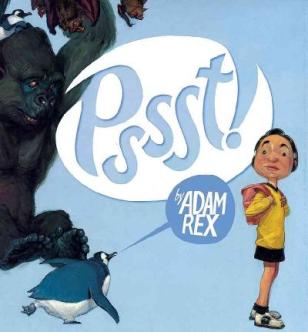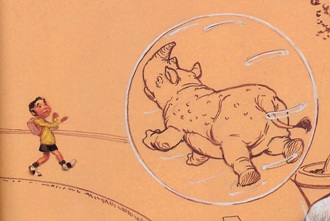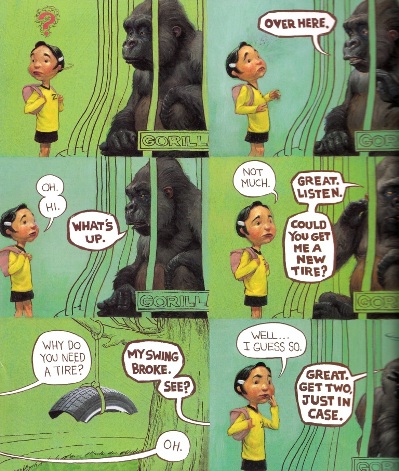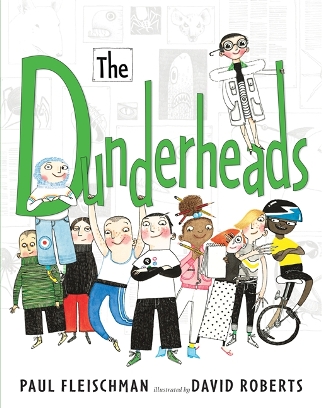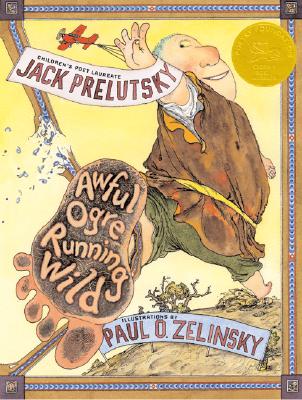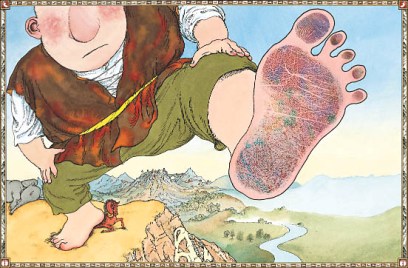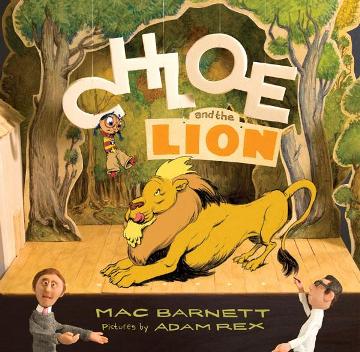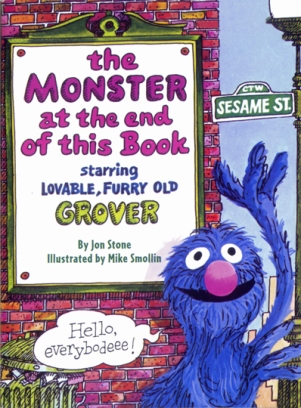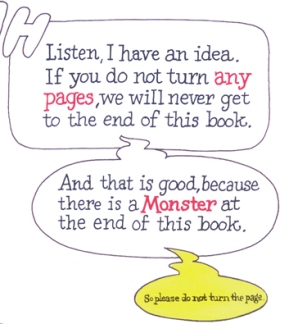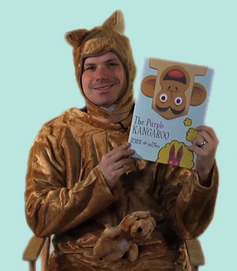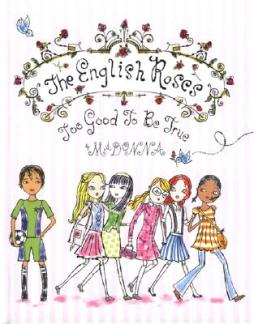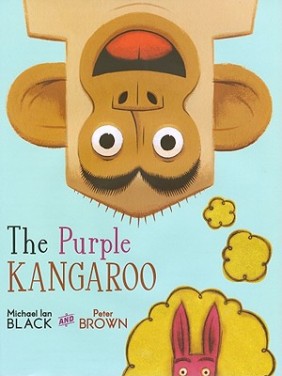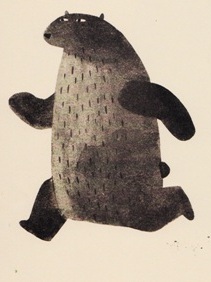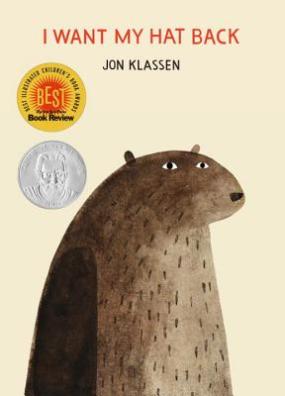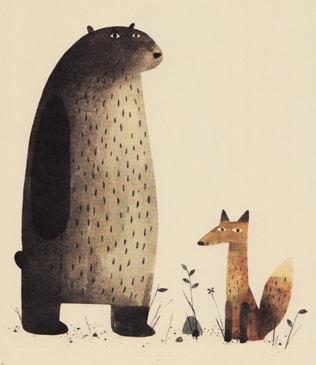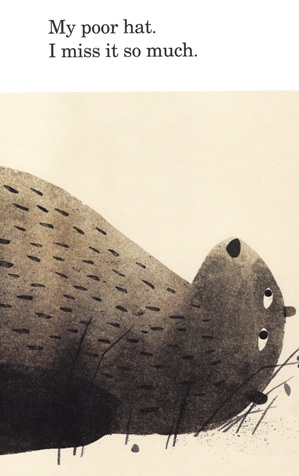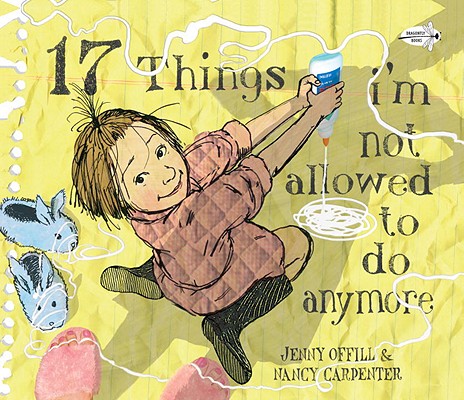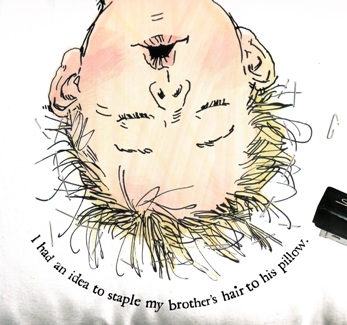Yesterday, I kicked off this short series in which I’m going to be calling out three fairly amazing picture books that have been on our family’s radar lately, books that I think are perfect for any bored early reader looking for something interesting to read this summer. These aren’t recent books or hot new best-sellers. They’re just what we’re reading and enjoying at the moment and I think they make for great summer reads. And, in my introduction to the series yesterday, I made an off-hand reference to a note I’d scribbled while looking for books to recommend. The note was “Best zoo book ever?” I was referring to today’s recommendation, Adam Rex‘s PSSST! (2007), a wonderfully original comedic gem of a picture book.
Adam Rex got on my daughter’s radar in a big way after we checked out Chloe and the Lion from the library a few weeks ago, so, when she saw PSSST! on a librarian’s pick shelf, his name stopped her in her tracks. “Is this the Chloe and the Lion guy?” she asked. When I confirmed that it was, without a word, she picked up PSSST! and dropped it into our tote bag full of all the other books we were planning to check out that day. (“We HAVE to get that one, OK?” she sternly informed me. I just smiled and nodded.)
The best part was, once we got home, we discovered that the book took place at a zoo – from the cover, we only knew it was about a girl talking to animals – and, coincidentally, my daughter was right in the middle of attending a week-long summer day camp at our local zoo. So, that weird piece of chance, mixed with the fact that my daughter found the book to be hysterically, uproariously funny, meant that we read PSSST! at bedtime every night for a week. It was a colossal hit.
The story opens with a young girl visiting the zoo by herself. And, before I get much further, I have to mention that this is one of the most visually arresting, hands-down coolest zoos I’ve ever seen in a picture book. Adam Rex‘s imagination is only matched by his tremendous artistic talent, and his vision of a zoo in PSSST! is so original and whimsical and grand that my daughter spent days poring over the details on every page. Details like the ticket booth shaped like the letters “ZOO” or the Egyptian-themed camel habitat called “Camel-lot.” This is a zoo where deer and rhino roam the grounds in giant hamster balls and a narwhal swims in a giant glass snowglobe. This is a very, very cool zoo.
(Quick nerd aside – I’m a big fan of Steve Purcell’s Sam & Max, a cult comic that has been turned into a series of very popular cult adventure video games, and Rex‘s oddball design work and tendency to drop deliciously-skewed details into his backgrounds reminded me a lot of the world of Sam & Max. But that’s just me.)
So, as the young girl makes her way through this amazing zoo, suddenly, she hears someone say “PSSST!” She turns around to see a gorilla looking at her. This is the conversation that follows:
GORILLA: Over here.
GIRL: Oh. Hi.
GORILLA: What’s up?
GIRL: Not much.
GORILLA: Great. Listen. Could you get me a new tire?
GIRL: Why do you need a tire?
GORILLA: My swing broke. See?
GIRL: Oh. Well… I guess so.
GORILLA: Great. Get two, just in case.
And the girl walks away. And this situation repeats itself over and over again. She finds herself hit with requests from a javelina, some bats, a group of penguins, sloths, turkeys, a baboon, and a tortoise – all of whom ask for completely random items, ranging from bike helmets to flashlights. The girl is hesitant to help, but they give her money (the peacock collects coins from the fountain) and there IS a store that seemingly sells everything right across the street. As if the girl’s awkward interactions with the animals weren’t funny enough, the whole scenario is leading up to a tremendous punchline at the end of the book that I won’t spoil here. Needless to say, the animals have an ulterior motive and it’s very, very funny. My daughter cackled – CACKLED – at the end of PSSST!, and there’s a particular exchange at the end (that takes place one week later) that she INSISTED on reading herself, simply because she wanted the pleasure of performing such a great gag herself. [read the rest of the post…]
{ 0 comments }
